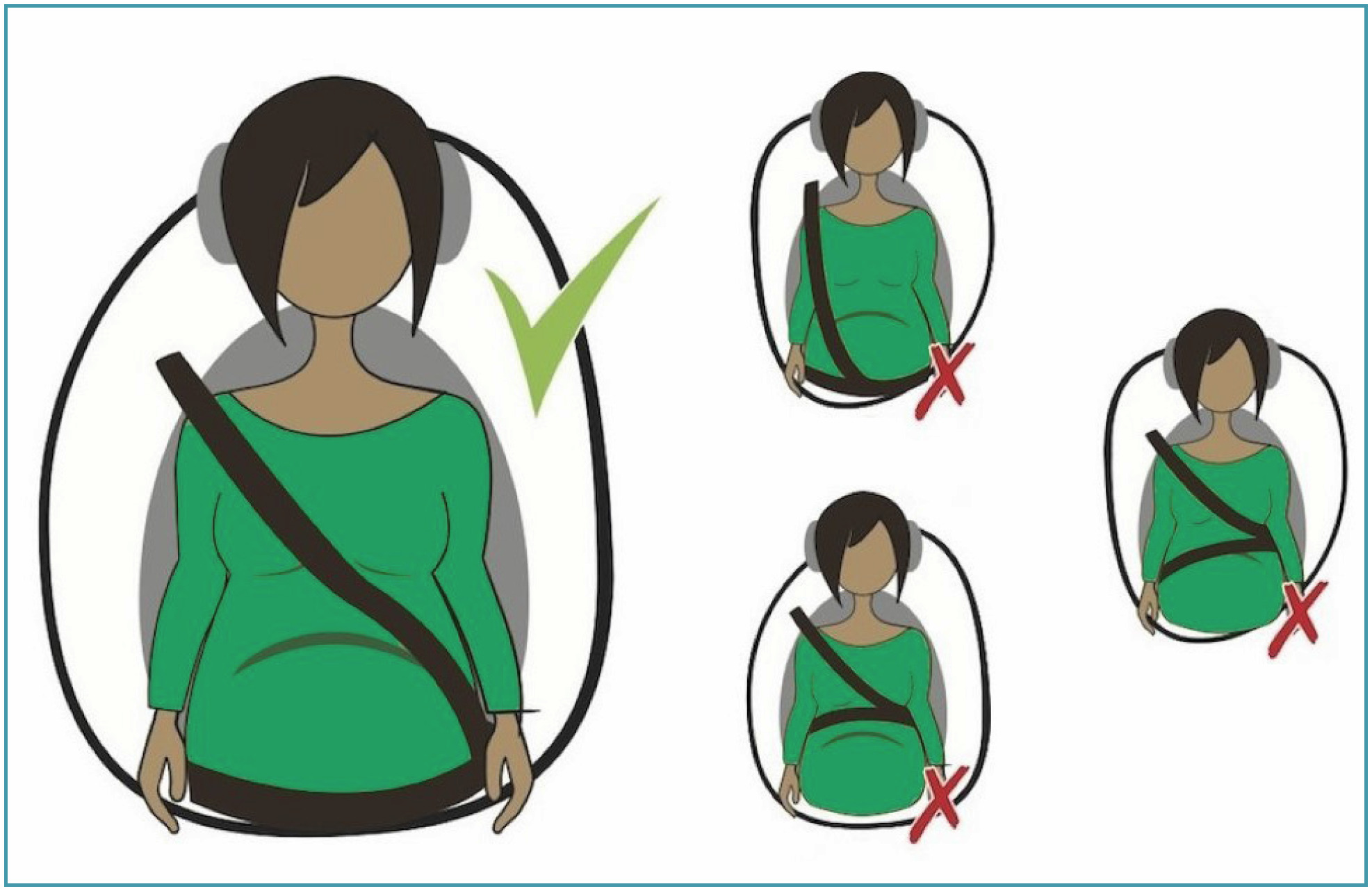-
Artigo Original00/00/2024
Vascular contraction of umbilical arteries of pregnant women with preeclampsia
Revista Brasileira de Ginecologia e Obstetrícia. 2024;46:e-rbgo2
Resumo
Artigo OriginalVascular contraction of umbilical arteries of pregnant women with preeclampsia
Revista Brasileira de Ginecologia e Obstetrícia. 2024;46:e-rbgo2
Visualizações467Ver maisAbstract
Objective:
Potassium channels have an important role in the vascular adaptation during pregnancy and a reduction in the expression of adenosine triphosphate-sensitive potassium channels (Katp) has been linked to preeclampsia. Activation of Katp induces vasodilation; however, no previous study has been conducted to evaluate the effects of the inhibition of these channels in the contractility of preeclamptic arteries. Glibenclamide is an oral antihyperglycemic agent that inhibits Katp and has been widely used in vascular studies.
Methods:
To investigate the effects of the inhibition of Katp, umbilical arteries of preeclamptic women and women with healthy pregnancies were assessed by vascular contractility experiments, in the presence or absence of glibenclamide. The umbilical arteries were challenged with cumulative concentrations of potassium chloride (KCl) and serotonin.
Results:
There were no differences between the groups concerning the maternal age and gestational age of the patients. The percentage of smokers, caucasians and primiparae per group was also similar. On the other hand, blood pressure parameters were elevated in the preeclamptic group. In addition, the preeclamptic group presented a significantly higher body mass index. The newborns of both groups presented similar APGAR scores and weights.
Conclusion:
In the presence of glibenclamide, there was an increase in the KCl-induced contractions only in vessels from the PE group, showing a possible involvement of these channels in the disorder.
-
Editorial00/00/2024
The path to elimination: FEBRASGO 2023’s targeted strategies against cervical cancer in Brazil
Revista Brasileira de Ginecologia e Obstetrícia. 2024;46:e-rbgoedt2
Resumo
EditorialThe path to elimination: FEBRASGO 2023’s targeted strategies against cervical cancer in Brazil
Revista Brasileira de Ginecologia e Obstetrícia. 2024;46:e-rbgoedt2
-
FEBRASGO POSITION STATEMENT00/00/2024
Breech birth care: Number 1 – 2024
Revista Brasileira de Ginecologia e Obstetrícia. 2024;46:e-rbgofps1
Resumo
FEBRASGO POSITION STATEMENTBreech birth care: Number 1 – 2024
Revista Brasileira de Ginecologia e Obstetrícia. 2024;46:e-rbgofps1
-
Editorial00/00/2024
RBGO – A journal to support gynecology and obstetrics research in Latin America
Revista Brasileira de Ginecologia e Obstetrícia. 2024;46:e-rbgoedt1
Resumo
EditorialRBGO – A journal to support gynecology and obstetrics research in Latin America
Revista Brasileira de Ginecologia e Obstetrícia. 2024;46:e-rbgoedt1
Visualizações590In 2016, the Brazilian Federation of the Gynecology and Obstetrics Associations – FEBRASGO began a major restructuring process of the RBGO – Revista Brasileira de Ginecologia e Obstetrícia with significant changes in its editorial policy. Since that date, after the editorial board was reformulated, the articles began to be published in English with absolute regularity […]Ver mais -
Editorial18/12/2023
Bridging the Gap between Surveillance and Interventions in Latin America Addressing Maternal and Perinatal Morbidity and Mortality
Revista Brasileira de Ginecologia e Obstetrícia. 2023;45(10):555-556
Resumo
EditorialBridging the Gap between Surveillance and Interventions in Latin America Addressing Maternal and Perinatal Morbidity and Mortality
Revista Brasileira de Ginecologia e Obstetrícia. 2023;45(10):555-556
Visualizações158The Latin American Center for Perinatology-PAHO aims to strengthen healthcare since 1970. For timely surveillance of maternal health, a perinatal information system (SIP) was implemented to enable monitoring trends of severe morbidity/mortality. It is time for integrated interventions to translate surveillance into health policies to address preventable maternal/perinatal deaths.Regardless of the global progress in reducing […]Ver mais -
FEBRASGO POSITION STATEMENT11/12/2023
Trauma and pregnancy: Number 10 – October 2023
Revista Brasileira de Ginecologia e Obstetrícia. 2023;45(10):622-631
Resumo
FEBRASGO POSITION STATEMENTTrauma and pregnancy: Number 10 – October 2023
Revista Brasileira de Ginecologia e Obstetrícia. 2023;45(10):622-631

-
Carta ao Editor11/12/2023
Infertilidade Masculina – E a Saúde Mental?
Revista Brasileira de Ginecologia e Obstetrícia. 2023;45(10):620-621
Resumo
Carta ao EditorInfertilidade Masculina – E a Saúde Mental?
Revista Brasileira de Ginecologia e Obstetrícia. 2023;45(10):620-621
-
Artigo de Revisão11/12/2023
Impacto prognóstico da expressão da proteína AGR3 no câncer de mama: Uma revisão sistemática e metanálise
Revista Brasileira de Ginecologia e Obstetrícia. 2023;45(10):609-619
Resumo
Artigo de RevisãoImpacto prognóstico da expressão da proteína AGR3 no câncer de mama: Uma revisão sistemática e metanálise
Revista Brasileira de Ginecologia e Obstetrícia. 2023;45(10):609-619
Visualizações110Ver maisResumo
Objetivo
Investigar o significado clinicopatológico e prognóstico da expressão da proteína anterior gradient 3 (AGR3) em mulheres com câncer de mama.
Fontes de Dados
Utilizamos as bases de dados PubMed, CINAHL, EMBASE, Scopus e Web of Science para pesquisar estudos em inglês, sem restrições quanto ao ano de publicação. Os termos buscados foram: breast cancer AND anterior gradient 3 OR AGR3 expression.
Seleção dos Estudos
Foram incluídos estudos observacionais ou intervencionais, estudos sobre a expressão da proteína AGR3 por imuno-histoquímica, e estudos sobre câncer de mama invasivo. Excluíram-se relatos de casos, estudos com animais e revisões. Quatro estudos foram selecionados, que continham 713 casos de câncer de mama.
Coleta de Dados
Foram extraídos dados relativos a características clinicopatológicas e sobrevida. A metanálise da prevalência da expressão de AGR3 foi realizada conforme as características clinicopatológicas, razões de risco (RRs) e sobrevida global (SG) e sobrevida livre de doença (SLD).
Síntese dos Dados
Encontrou-se expressão de AGR3 em 62% dos casos, que se associou com grau histológico II, positividade de receptores de estrogênio e progesterona, baixa expressão de ki67, recorrência ou metástase à distância e subtipos luminais. Em pacientes com graus histológicos baixo e intermediário, a expressão de AGR3 conferiu pior SG (RR: 2,39; intervalo de confiança de 95% [IC95%]: 0,628–4,159; p = 0,008) e pior SLD (RR: 3,856; IC95%: 1,026–6,686; p = 0,008).
Conclusão
A AGR3 pode ser um biomarcador para a detecção precoce do câncer de mama e predizer o prognóstico em subtipos luminais. Em graus histológicos baixo e intermediário, a expressão da proteína AGR3 pode indicar um prognóstico desfavorável em relação à sobrevida.
Busca
Pesquisar em:
Nuvem de Tags
Gravidez (167)Fatores de risco (89)Menopausa (79)Pré-eclâmpsia (66)Endometriose (65)Mama (59)Infertilidade (58)Obesidade (57)Complicações na gravidez (56)Diagnóstico pré-natal (54)Gestação (54)Qualidade de vida (53)Saúde da mulher (51)Cesárea (50)Complicações da gravidez (50)Neoplasias da mama (49)Fertilização in vitro (48)Cuidado pré-natal (47)Mortalidade materna (43)Ultra-sonografia (43)



